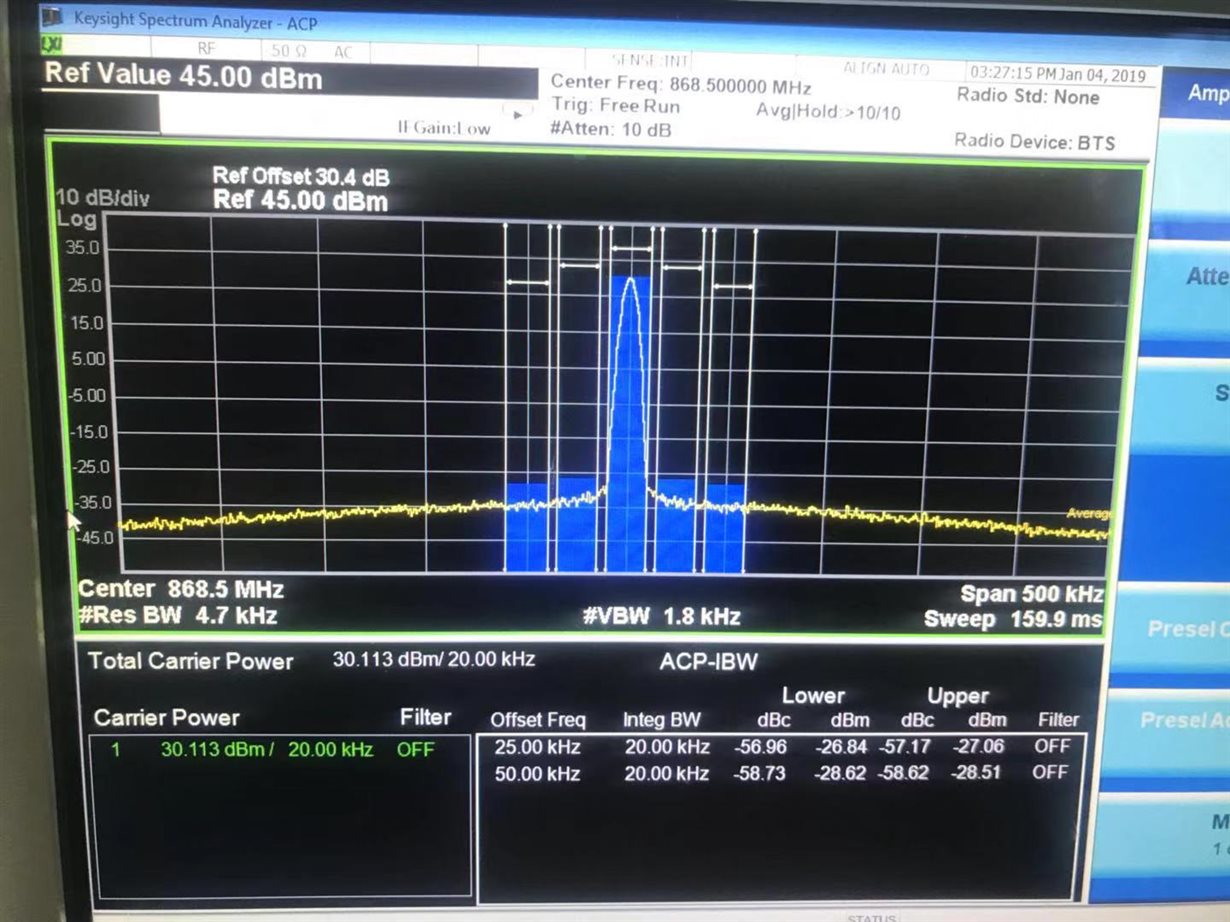dear:
In CC1125 document , it describes "Adjacent Channel Selectivity: 67 dB at 6.25-kHz Offset ".
But we can only reach 58dB at 50kHz offset. Our CC1125 config is wireless:4800bps ,2GFSK, XTAL:40M Hz,RF Freq:868.5M,Synchronous Serial Mode,Dev 0,single carrier.How to improve it?
On the other hand,the Adjacent Channel Selectivity is good at 450M in our product,it can reach 62dB at 50kHz offset.




